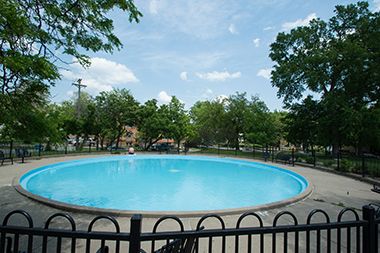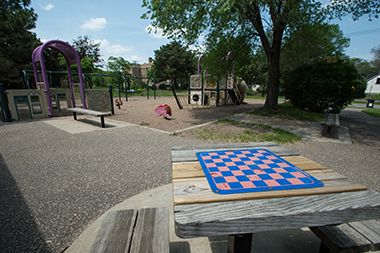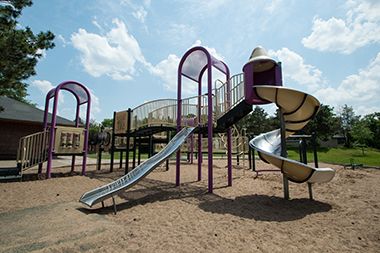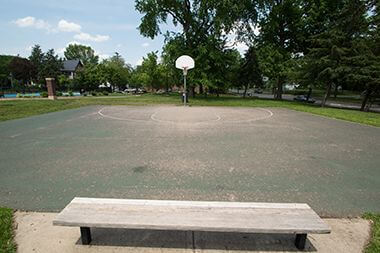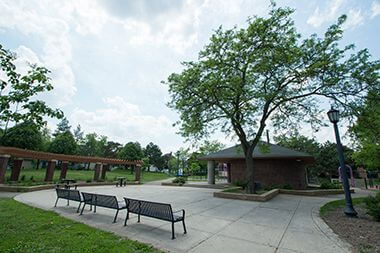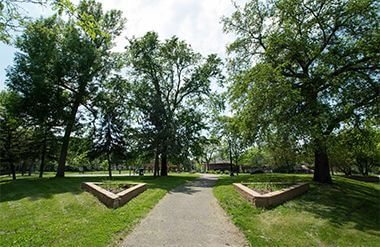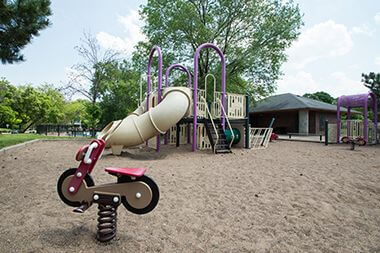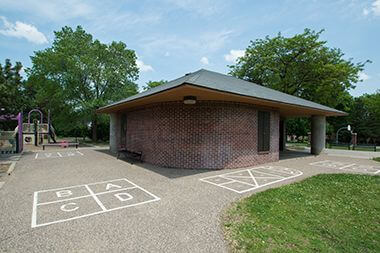Address
2509 Colfax Ave. S
Minneapolis, MN 55405
Plan Your Route
Contact
Questions about Mueller Park can be directed to Whittier Recreation Center
Phone: 612-370-4966
Email: whittier@minneapolisparks.org
Park Hours
6 am-midnight
Ordinance PB-2-33
Wading Pool Information
Features & Amenities
- Basketball Court
- Drinking Fountain
- Grill
- Picnic Area
- Playground/Tot Lot
- Restroom Facility
- Wading Pool
Not finding what you’re looking for?
Search Parks & Destinations
Good to Know
Basketball Court is half-court.
Park Projects
See what’s currently in the works for this park. Some projects may be under the name of the regional park or service area it lives within. View Current Projects

Your NPP20 money at work:
Maintenance is increasing at all neighborhood parks, thanks to additional annual funding from the 20-Year Neighborhood Park Plan (NPP20). This initiative also funds ongoing rehabilitation and major project to restore neighborhood parks and help address racial and economic equity.
Park Details
The Mueller Park site was once the home of noted Minnesota writer, Maud Hart Lovelace, author of historical novels and the Betsy-Tacy series of books for young readers. A plaque in the park commemorating the celebrated author’s former home was dedicated in July, 2009.
Rentals & Permits
Outdoor Use and Event Space: Learn how to reserve park space for corporate events, community celebrations, and more.
History
Name: The park was named for brothers Robert C.Mueller and Herbert L. Mueller on October 26, 1977. The park was named in the Mueller’s honor at the request of neighborhood groups, including The Wedge neighborhood organization. Herbert Mueller had lived in the same house on Bryant Avenue South near the park since 1921. He and his brother Robert, who had been an editor at Field and Stream magazine, were the resident authorities on the natural history of the neighborhood. Robert helped to organize an elm watch, one of the first in the state, in 1970s, as the city prepared for the onslaught of Dutch Elm disease. The Muellers were among the few people who have had a Minneapolis park named for them while still living. The brothers later donated money to assist in the construction of the shelter at the entrance to the Thomas Sadler Roberts Bird Sanctuary at Lyndale Park. Until the park was officially named, it was referred to as Lowry Hill East Park after the neighborhood in which it is located.
Acquisition and Development
Mueller Park is in a densely-populated neighborhood that had been identified in 1944 as one that didn’t have adequate park facilities. In 1970 the park board was attempting to address that long-standing problem, when the federal Department of Housing and Urban Development (HUD) created a “Parks in the Cities” program to encourage more urban parks. Minneapolis applied for grants under that program to acquire and develop Mueller Park along with Whittier and Willard parks. According to Al Wittman, the assistant superintendent for planning during this period of remarkable development of Minneapolis parks, Minneapolis was the only city that applied for funds under the federal program.
With the assistance of funds from HUD and from the National Park Service, the park board began to acquire this half-block playground park in 1973. The acquisition took some time to complete as the park board adopted a policy of trying to minimize dislocation of people who lived on the land targeted for the park. The park was provided playground equipment, a wading pool, a tennis court, horseshoe pits, and a small toilet building when it was developed in 1976. The park was officially opened on June 26, 1976.
The park was redesigned and upgraded with new playground equipment in 1997. The horseshoe pits were filled in and the tennis court was replaced with a basketball court. The park was supervised with staff from Whittier Park in the mid-1990s. Additional improvements were made to the park in 1998 with funds from the Neighborhood Revitalization Program.
Park history compiled and written by David C. Smith.








